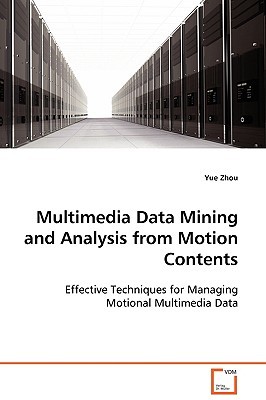
- We will send in 10–14 business days.
- Author: Yue Zhou
- Publisher: VDM Verlag
- ISBN-10: 3639102800
- ISBN-13: 9783639102802
- Format: 15.2 x 22.9 x 0.7 cm, softcover
- Language: English
- SAVE -10% with code: EXTRA
Multimedia Data Mining and Analysis from Motion Contents (e-book) (used book) | bookbook.eu
Reviews
Description
Object motion in multimedia database contains important information for data content analysis especially event detection. The motion content in its raw form is real-value multidimensional time series. Processing and analyzing this kind of data is not trivial since most standard machine learning algorithms can only be applied to data in vector space. In this work, we explore the techniques to solve three problems related to motion cues in multimedia databases: object motion estimation, motion representation, and motion analysis to recognize activities and events. In this book we first discuss our work on object detection and tracking, which estimate the object motion. We then introduce our edit distance based approach to measure the similarity between motion trajectories in its raw form. We also present our work on a novel trajectory representation framework, "bag of segments," by which trajectories are transformed to a frequency in vector space so that most traditional machine learning algorithms can be directly applied to the motion trajectory data. Finally, we introduce our work on using the Granger causality test to analyze multi-object interactions from motion.
EXTRA 10 % discount with code: EXTRA
The promotion ends in 19d.03:29:23
The discount code is valid when purchasing from 10 €. Discounts do not stack.
- Author: Yue Zhou
- Publisher: VDM Verlag
- ISBN-10: 3639102800
- ISBN-13: 9783639102802
- Format: 15.2 x 22.9 x 0.7 cm, softcover
- Language: English English
Object motion in multimedia database contains important information for data content analysis especially event detection. The motion content in its raw form is real-value multidimensional time series. Processing and analyzing this kind of data is not trivial since most standard machine learning algorithms can only be applied to data in vector space. In this work, we explore the techniques to solve three problems related to motion cues in multimedia databases: object motion estimation, motion representation, and motion analysis to recognize activities and events. In this book we first discuss our work on object detection and tracking, which estimate the object motion. We then introduce our edit distance based approach to measure the similarity between motion trajectories in its raw form. We also present our work on a novel trajectory representation framework, "bag of segments," by which trajectories are transformed to a frequency in vector space so that most traditional machine learning algorithms can be directly applied to the motion trajectory data. Finally, we introduce our work on using the Granger causality test to analyze multi-object interactions from motion.


Reviews